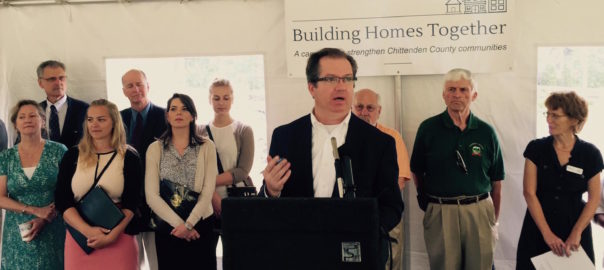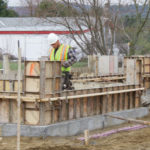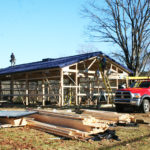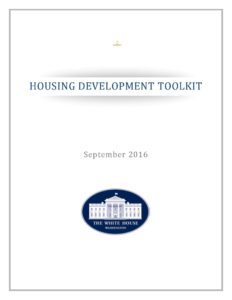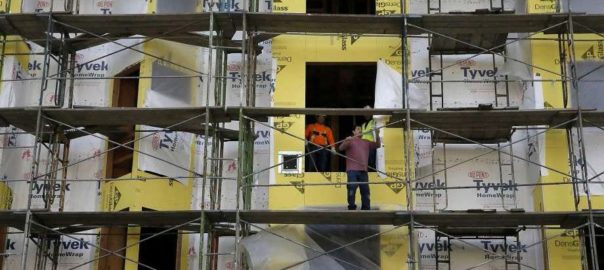Passing this Vermont Housing and Conservation Board press release forward from A Vermont Affordable Housing Coalition news item.
PRESS RELEASE
June 28, 2017
Contact: Gus Seelig, Executive Director, 828-3251, gus@vhcb.org
Jen Hollar, Director of Policy and Special Projects: cell: 793-7346; Jennifer@vhcb.org
The Vermont Housing & Conservation Board will use $35 million in new funding for the creation of rental housing and home ownership opportunities for 550-650 low- and moderate-income Vermonters over the next two to three years. The bold, new initiative represents the largest state investment in housing in more than a decade. It was first proposed by Governor Phil Scott in his January budget address, gained strong support in the legislature, and was signed into law today.
Governor Scott said, “When workers are unable to find adequate, affordable housing, economic growth is constrained. Vermont has a very low rate of rental vacancy and we need to increase access to homeownership. This effort will ratchet up the production of new housing to serve households at a wide range of incomes, spur economic growth, create jobs, and have a significant impact on Vermont’s supply of housing.”
Tim Ashe, President Pro Tempore of the Vermont Senate, said, “I’ve seen the housing shortage up close. In my time at Cathedral Square, we’d fill up new buildings within hours. Literally. So when I met with Governor Scott in November and we both expressed a strong interest in seeing more housing supply, I knew it was a matter of how we’d do it, not if we’d do it. I want to thank Senators Mullin, Sirotkin, Balint, Baruth, and Clarkson and Representative Head and her team for their hard work to see it to the finish line.”
Helen Head, Chair of the Vermont House General, Housing and Military Affairs Committee, said, “Vermont’s housing crunch has been well-documented. According to a study commissioned by the legislature last summer, we can reduce homelessness dramatically with a targeted approach, creating more housing with support services along with housing for the lowest income households. Middle income households also struggle to find housing. This housing initiative will address the needs of a wide range of Vermonters and we’re proud to support it.”
Gus Seelig, Executive Director of VHCB, said, “We appreciate the support of the Governor and the Legislative Leadership in advancing this exciting initiative. The first 100 homes should be under construction across the state before the end of the year.”
The bond funds will be matched with state, federal, and private sources to leverage approximately $2-$3 for every one dollar of bond funds, resulting in $70-100 million in additional resources for housing development. Spending on affordable housing yields multiple benefits across the economy. The $35 million housing bond will also act as a stimulus package, generating millions of dollars of economic activity through the creation of jobs and the purchase of goods. At least 25% of the housing will be targeted to households with incomes below $35,000 and another 25% will be targeted to middle-income Vermonters earning $55,000-$83,000 annually (for 4-person households). The balance of the funds will be awarded to projects based on community needs, applications received and the availability of resources for leverage.
“Every night, our shelter, just like shelters across the state, is full of people who need and deserve a home,” said Sara Kobylenski, Executive Director of the Upper Valley Haven, based in White River Junction. “We have allowed ourselves to slide into an alarming housing deficit, and the most vulnerable people in our communities are suffering for it. The housing bond is a timely investment that will improve the lives of many Vermonters.”
“Housing construction is critical piece of our economic engine, and this proposal promises to create hundreds of good paying jobs. It’s also vital to employers who say time and time again how hard it is for their employees or prospective employees to find adequate, affordable housing,” said Tom Torti, President and CEO of the Lake Champlain Regional Chamber of Commerce and board member of the Committee on Temporary Shelter (COTS).
In collaboration with the Department of Housing and Community Development, VHCB is gathering input on the highest priority housing needs and potential projects in regional meetings across the state. VHCB will be accepting applications and funding developments for the construction and rehabilitation of rental housing and single-family homes with an emphasis on creating new homes.
The revenue bond will be issued by the Vermont Housing Finance Agency. It is expected to yield $33-34 million in proceeds and will be paid by a $2.5 million in annual revenue from the property transfer tax over 20 years, through 2039.
______________________________________________________________________________
Sources: The Vermont Futures Project of the Vermont Chamber of Commerce, January 2017; Roadmap to End Homelessness, The Corporation for Supportive Housing, December 2016; Vermont’s Statewide Housing Needs Assessment by Bowen National Research, 2014
______________________________________________________________________________
VHCB makes loans and grants for the creation of affordable housing and the conservation of agricultural and recreational lands, forest land, natural areas and historic properties. www.vhcb.org
Read this synopsis of the Housing Revenue Bond Initiative.
Read more about the Governor’s budget and the housing bond from the Burlington Free Press.


